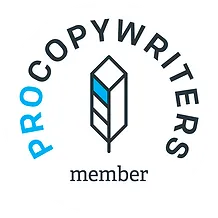“It’s okay, we’ve planned the messaging,” said the client. “We’ve gone through and decided what you need to say on every page. So it shouldn’t take too long.”
Alarm bells, right?
If you’re a copywriter, you know that deciding what to say is where the magic happens. For all your stylish execution, if the messaging isn’t on point, you’re screwed.
And that’s exactly where so many website projects seem to go wrong.
Websites have more than one page
I remember a time when the average website I worked on would have 5, maybe 6 pages. Today, partly as the kind of client I work with has shifted, I’m lucky if it’s less than 25.
That’s why people spend a lot of time and energy on in-depth content plans. They chart what every page will be, say, and do from start to finish.
It’s a great way to:
- Make sure you’re not missing anything
- See how different pages work together
- Plan your time (and budget)
But the tendency, understandably, is to silo bits of information into individual pages or sections. And that makes it an unhelpful tool for writing.
Nobody is reading the whole thing
So many website projects miss this important fact: the average visitor isn’t going to read anything, let alone everything.
If you’re reserving specific topics, messages or killer headlines for a particular page, there’s a good chance it won’t be seen.
What great website copy really looks like is the same core story, told multiple times. And at different scales.
Stories inside of themselves
If you know, you know.
Whenever I’m working on a new website, the first thing I do is figure out what that small, self-contained story is. The part that starts with what you do and ends with why someone should care.
It doesn’t involve talking about your back-office processes, product features, or day-to-day activity. It’s about capturing interest and attention with a simple, easy to follow idea.
This core is something that should be repeated everywhere — because there’s a good chance someone will still only see it once.
It starts with the homepage. It’s the story writ large — big, bold messages and an all-in-one summary. If someone just reads the headlines, they’ll get all the key points.
If they read the body, they’ll get a little more detail around those same ideas. And, if they click through, they’ll get entire pages around just one part of that story.
But it’s vital the journey goes the other way, too. So if someone lands on a product page, they get features and benefits — filtered through the lens of that same overarching story. Maybe even some brand-building banners that they can click to go back ‘up the funnel’ to a top-level page.
Russian dolls, painted differently
This isn’t a call for repetition or copy and paste. Far from it.
While underlying messages need to be consistent, there’s endless freedom to twist and morph that messaging. Which is helpful, because nobody really knows which way of expressing it will be the most impactful.
Maybe you’re a little more technical in your product copy. A little more inward-looking on your about page.
If the story at the heart of it all is strong, it’s not an anchor to weigh you down. It’s a foundation for exciting, creative work — the things that really make copy fly.
Leaving people with one message
There’s an awful lot we’d love to say about a brand. The awards they’ve won. The customers they’ve delighted. The culture, the passion, the people.
But it all needs to hang under one structure — a hierarchy of messaging that, ultimately, leaves people with a single idea. Something they can truly understand, remember, and — if it’s the right idea in the first place — act on.
